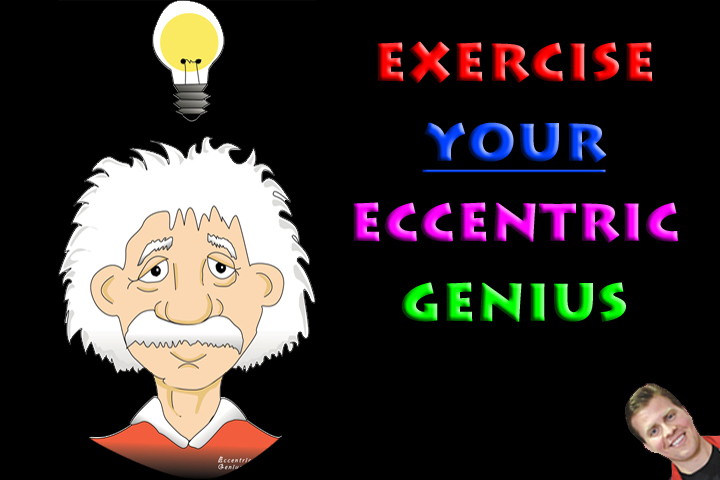 The Garden Island Newspaper Website
The Garden Island Newspaper Website
"How Two Exercise?"
Top Ten Training Tricks
Aloha Doug,
Mahalo for all of the information in your column. I’ve been good about doing cardio but I know that lifting weights is important too. Can you please give me some basic tips for strength training? There are so many different opinions out there and I’m just not sure what’s right anymore.
- Judith C, Kapaa
Aloha Judy,
Training your muscles with resistance is one of the most productive methods for rapidly and radically transforming your physical structure and physiological strength. My Top Ten Training Tricks will help you to maximize the safety and effectiveness of any program that you choose to choose.
1. Warm Before Work

Even on your “non-cardio” days, your muscles must be warmed up before you can safely, and most effectively, perform strength training exercises. No matter what, always perform at least a few minutes of sustained whole-body exercise before targeting specific muscles with free weights, resistance machines, or intense calisthenics. Even if you are really tight on time, it is always better to shorten your workout than to shorten your warm-up. Play it safe and start up slowly.
2. Flex Before Flexibility
Most people think that stretching is a good activity for warming up; however, if you stretch before exercise, you’ll be sorry. Stretching should always be done at the end of your workout, after the blood is pumping and muscles, tendons, and ligaments are warm. You can either stretch each muscle individually, in between exercises, or stretch your entire body at the end. Never stretch a cold, non-pliable muscle; this may actually pose more risk of injury than not stretching at all.
3. Exhale on Exertion

Never hold your breath during exercise. This is probably the most important safety principle. Holding your breath, with your mouth or throat/glottis closed, can temporarily double or triple your blood pressure. Yikes!!! As a general rule, breathe out when you feel like you're exerting pressure (lifting weight and raising resistance); think “blow it up!” Then, breathe normally, in and out, as you release pressure (lowering weight and resisting resistance). If in doubt… breathe out.
4. Rest is Best

Your body responds to training during rest. Intense training breaks your body apart. Rest allows your body to mend itself back together into a brand new, better you: stronger, faster, leaner, shapelier, and healthier. At the most, you should work a muscle group no more frequently than every few days, and sometimes only once per week when training intensely.
For many people, strength training exercises need to be grouped so that similar muscles are worked on similar days. Not all muscle groups can be isolated, and those that work in tandem have no choice but to contract together. It makes sense that muscles that work together should be worked out together, right? It’s working out the way your body works. Moreover, arranging your workouts according to muscles and their movements assures adequate rest between workouts.
Group 1: Upper Body PUSH
Group 2: Lower Body LEGS
Group 3: Upper Body PULL
Also, on most occasions, exercises should be completed in order from largest to smallest muscles. This allows for most of your energy to be directed toward the larger muscles first, when you have the most energy. It also prevents the smaller muscles (and weakest links) from becoming prematurely fatigued, which decreases the effectiveness of the entire routine.
And what about training abs? Regardless of what you may have seen or heard, my advice is that you always work the abdominal muscles at the end of your workout, since they stabilize the torso while performing other exercises. Even more importantly, lower back muscles should always be worked after the abdominals. Otherwise, if your lower back muscles are prematurely fatigued, and then you work your abs with crunches and twists, the potential of lower back injury increases substantially.
5. The Spice of Life

With regard to exercise, your body and brain become very familiar, and very bored, very easily. To keep your brain motivated and your body progressing, it is essential that you continually tweak your workouts. One of the best things that you can do to continually realize results is to not do what you’ve just done. Did you do Push-Ups last time? Then do Chest Press this time. Did you do Dumbbell Curls this week? Then do Machine Curls next week. If you continually rotate your muscles’ many motions, your body will get more results from less exercise. Add variety frequently. Physiological and psychological staleness is the beginning of the end, so be sure to add in that specific spice of life... and in good measure.
6. Sets & Reps

A REP (short for REPetition) is one complete movement of an exercise, basically one lifting and one lowering of a weight. For example, during push-ups, you lift your body up and lower your body back down. That’s one rep. If you perform 10 push-ups in a row, that’s one SET of 10 reps. If you take a short break and then perform 10 more reps, you’ve now completed two sets of push-ups, for a total of 20 reps. Performing more reps and sets is not necessarily the best way to exercise, as there is a significant law of diminishing returns in play. In fact, the most productive time during your entire strength workout is arguably the final rep of your first intense working set, after finishing all lighter warm-up sets.
7. Speed of Movement

This principle is SO IMPORTANT that I’ve written an entire book about the benefits of slow-motion strength training. An “eccentric” muscle action is the scientific term used to describe a muscle fiber as it lengthens under tension. Learning to “Exercise Your Eccentric Genius” (my book) is indubitably “The Best Way to Exercise” (my business). Long story short... slowly lowering weight is the secret to strength training. If you do nothing else, please perform every single exercise with a deliberately slow speed of movement. Never use momentum to lift a weight; instead, always lift a weight slowly. Then, even more importantly, always lower a weight SUPER SLOWLY! In fact, the only reason that you lift a weight is so that you can lower a weight. Watch your watch. If a set takes less than a minute to perform, please SLOW↓DOWN. Trust me for now; there will be much more on this in columns to come.
8. Exercise Proper Technique

Lowering weight slowly is especially valuable when you perfect your performance by exercising perfect form. Since each specific exercise has its own precise technique, I understand that memorizing meticulous movements can become a little overwhelming for most people. However, as you train your brain as well as your body, you’ll realize that it only takes a few minutes to learn the best way to exercise for each exercise. Master it once and apply it forever. And, I’m always here to help in any way that you see fit! Vast resources are readily available throughout the entire Super 7-Week Shape-Up System; without a doubt, you can be a veritable expert in no time.
9. Perform Progression

While there are some exceptions to this rule, it is important to try to continually progress by regularly reforming repetitions, resistances, or routines. This won’t necessarily occur during each workout, but overall progression should continue each week, at least until you achieve a level of fitness which you would like to maintain. Progression does not always need to coincide with an improved physique or performance. Larger and stronger muscles show definite progress, but so does any systematic modification to any aspect of your program… reps, sets, exercises, or resistances. Big or small, one step at a time is still progress. Keep in mind that, with progression, there is also a law of diminishing returns. Without question, the most dramatic results of any program always develop from the least amount of exercise. The difference between doing absolutely nothing and next to nothing is tremendous.
10. Seek Professional Guidance

Last but not least… that’s me!! J Finding a qualified and personable personal fitness professional is no easy task. I should know. Over the years, I’ve interviewed literally thousands of trainers to hire a hundred or so. Regardless of whether or not you are seeking to personally train with someone with my particular education, expertise, or experiences, I am still here to help you, via my column, “In Health & With Hope.” So, if you have any questions about fitness and fat loss, or eating and exercise, I promise to give you my best answers based on decades of experience helping people just like you. I look forward to hearing from you as we all prepare for a healthy and happy new year ahead. Aloha & Mahalo!
In Health & With Hope,
Doug :-)

Doug Jones earned his Master’s Degree in Exercise Physiology from the University of Maryland on a full academic scholarship and has served professionals and personalities as a concierge fitness trainer for decades. As a resident of Kauai and Connecticut, he has helped millions of people learn the secrets of fitness and fat loss through his Super 7-Week Shape-Up System. Doug has trained thousands of clients personally and is looking forward to helping you reach all of your health and fitness goals.
To begin ONLINE FOR FREE,
please go to: http://Super7System.com
To begin ON ISLAND FOR FREE,
please go to: http://DougJonesFitness.com


